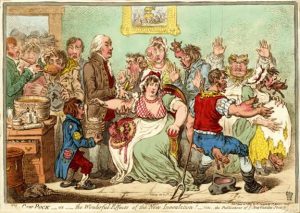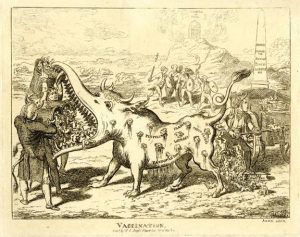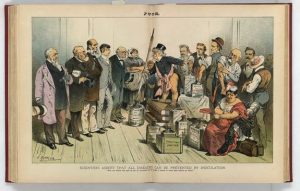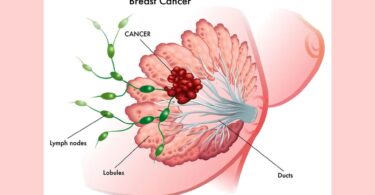“To gild refined gold, to paint the lily,
To throw a perfume on the violet, …
Is wasteful and ridiculous excess.”
The Life and Death of King John, Act 4, Scene 2
William Shakespeare (1564-1616)
Originally published in the Alliance of Registered Homeopaths’ quarterly journal, Homeopathy in Practice, Dec. 2015.
Therapeutic and preventative vaccinating has gradually become medically fashionable over the past two or three decades. By 2012, in extremis, there were nearly three hundred vaccines being researched and developed already by America’s biopharmaceutical research companies for the prevention and treatment of disease [1] and, according to the Centres for Disease Control and Prevention (CDC), newborns up to fifteen months old can receive more than twenty ‘jabs’. [2] However, many experienced medical professionals in conventional and alternative fields of medicine are concerned at this burgeoning trend due to their experiences with the damage these ‘promising’ vaccinations have for some.
A brief look at the background and modus operandi of vaccinating may bring some understanding as to why there is this rigid adherence to vaccinating when clinical results can be dubious or even terminal. The fundamental reasoning behind vaccinating children and adults is natural: the fear of death. No-one wants to lose a beloved family member, especially not a young child. But is the ‘one-size-fits-all’ means to an end far worse in terms of morbidity and mortality than the anticipated disease? Can disease be wholly prevented, or can viruses be one hundred percent controlled by this system of medicine?
Control can be paradoxical. How many times have you noticed that the more control you thought you had, in hindsight the opposite was the reality? Take for instance the anecdote about catching a monkey: you put a large ball of the monkey’s favourite fare inside a narrow-necked gourd. Then, when he plunges his hand in and grasps the ball, he is unable to remove neither his hand nor the ball of food – and he can’t scamper away dragging a heavy gourd. The monkey may think he has control but in actual fact he has lost his freedom. Captivated AND captured.
We can apply this anecdote to health and healing. It has been observed by some practitioners that healing usually begins when conscious ‘control’ is lessened, that is, when the patient ‘lets go’. Then what is known to homeopaths as the vital force [3] finally has the autonomy to heal itself. It’s not the medicine that heals per se; it is the actual life-force of the organism that heals. So when a homeopathic remedy is given to an ill person, the vital force is enhanced and encouraged to heal. We all know that for instance sleep, relaxation, and meditation have the potential to heal: likewise a well-matched homeopathic remedy, the similimum, also has the potential to heal.
For centuries homeopaths knew that the ‘letting go’ during a bona fide healing episode after a homeopathic remedy could be the fulcrum for restoration to health. By relinquishing control, the innate healing energy can once again regain equilibrium. But this release doesn’t only apply to the physical level – it is observable with the mind and emotions too. As Swiss psychiatrist Professor C. G. Jung said: “The most intense conflicts, if overcome, leave behind a sense of security and calm that is not easily disturbed. It is just these intense conflicts and their conflagration which are needed to produce valuable and lasting results.”[4]
Control is widespread in our modern world, and it’s often necessary for our continued survival. But control can be overdone. How many times have you heard: “get a hold of yourself!”, “control yourself!” or “stop that irritating cough/pain/itching immediately with Brand-X!”? It’s inherent in our collective unconscious. Getting control in order to overcome a problem is not new – it is part of our shared mind-set that goes back a long, long way to our pre-history when the realisation dawned that we were vulnerable in the face of Nature. In some circumstances control was vital for our survival. And we still see this need for control in order to survive – managing the climate, selecting our diets, controlling a nation’s population, policing our new internet communications, perpetuating our cultural ideas, etcetera. And maintaining our health.
Many diseases came from our early agricultural development. The transformation of epidemic diseases into the endemic diseases of childhood followed the domestication of animals. When we began herding and breeding cattle, these animals supplied pathogens like tuberculosis, and many of our viral poxes like smallpox. The horse became essential but introduced rhinoviruses and the common cold virus into human populations. Pigs and ducks played their part by passing on influenza. And measles is the outcome of rinderpest which shifted between cattle, dogs (canine distemper) and people. More recently, the MERS-CoV epidemic in the Middle East and Korea has been sourced to camels and bats. So agriculture, permanent settlements, food stores, polluted water and improved communications helped many forms of disease to settle in.
Isolated groups of people were occasionally overwhelmed by epidemics that either killed or immunized so many that the actual pathogens all but vanished because there were no hosts left. However those isolated groups that were fortunate to have survived disease later on expanded so that a small pocket of people without immunity were always available for the parasitic viruses. Thus expanding human populations made evolutionary adaptations and many devastating epidemic diseases gradually became endemic. The ancient viruses could survive but did not flourish and a natural control was established where humans and viruses could live together symbiotically. However suffering continued.
To control and alleviate suffering a range of folk medicines and therapies evolved throughout the ages. For instance, in India and Egypt, as early as the sixth century, different forms of inoculation were documented. Hindu mythology relates that Shitala, the goddess of smallpox and other infectious diseases, was invoked with prayers and services and an inoculation ritual, where people breathed in dried scabs from smallpox wounds to encourage a mild case of smallpox, was performed. Homeopaths may appreciate that Shitala was seen as both the cause and the cure of the disease.
Our modern medicine of today has its roots in early scientific and alchemical developments during the start of the chemical revolution in the seventeenth century. Some of the books that formed the foundation of modern medical science were the College of Physicians’ Pharmacopoeia Londinensis (1618), assisted by the moderate Paracelsan Theodore Turquet de Mayerne (1573-1655); the first chemistry textbook Alchymia (Alchemy) (1606) was written by Andreas Libavius (1540-1616); and Ortus medicinae (1648) was written by the founder of biochemistry, another Paracelsan, Joan Baptista Van Helmont (1579-1644).
During these chemical developments in medicine, symptomatic relief was naturally the principal aim: if the symptoms were gone then it seemed reasonable to presume the illness was also gone and the patient healed. This is an allopathic view of cure: the control and apparent removal of symptoms with an external (usually chemical-based) material – and this seemingly astounding act through the simple creation of an opposite reaction in the organism. Easy. Nonetheless, the heroic treatments deployed to control symptoms all too often damaged the vital force. If a patient survived the ‘health-promoting’ regime, they were then frequently left chronically ill or unwittingly facing premature death. The action of the vital force, a natural gauge that shows the level of health by the very symptoms produced, was effectively suppressed and left to flounder. And a weakened vital force could only lead to chronic illness or death.
Concurrent with the therapeutic developments in chemical medicine, another new trend was taking hold. In 1718 Lady Mary Wortley Montagu, the wife of the British Ambassador in Turkey, observed a form of inoculation, called variolation, against smallpox using active smallpox – so she had her small son variolated. By introducing pus from an infected person under the skin of a non-infected person theoretically meant the recipient would get sick with a mild form of the disease but build immunity to the more dangerous wild form. Smallpox, it was assumed, could be controlled to some extent. Lady Montagu then brought variolation to England but not without fierce debate amongst physicians, apothecaries, surgeons, politicians, royalty and the Church. Later on variolation was employed around the world, including the USA. But there were premature deaths and outbreaks of smallpox from using too virulent a strain – all of which created a chorus of disapproval.
By 1798 Dr Edward Jenner had discovered that using the cowpox virus instead of the live smallpox virus prevented the appearance of the smallpox virus. (The cowpox virus Variolae vaccinae belongs to the Orthopox family of viruses which also include the variola viruses which cause smallpox). History was made and, despite controversy, vaccination was underway to control smallpox. Nevertheless vaccination stimulated further outrage as the satirical print of 1802 below shows: here Dr Jenner is in a vaccine institution where poor patients crowd in through a doorway on the left; in the room are also those whose treatment has had dire consequences. [5] Homeopaths may appreciate the remedy Thuja Occidentalis as an antidote to smallpox vaccination (vaccinosis) from this graphic cartoon where the ‘animal’ inside vaccinated individuals struggles to get out. Perhaps the long-term outcome of this erstwhile new and improved control of smallpox via a dissimilar vaccination will never be fully appreciated. As Dr Samuel Hahnemann noted: “Much more frequently than in the course of nature, an artificial disease caused by the long-continued employment of powerful, inappropriate (allopathic) medicine, associates itself with the old natural disease, which is dissimilar to (and therefore not curable by) the former, and the chronic patient now becomes doubly diseased.” [6] In the aftermath of two hundred years of vaccinating and over-medicating it is unfortunate that modern diseases are often even more complex and difficult to treat than ever before. Hahnemann was not alone in realising the degenerative effects of over-medication.
Figure 1 ‘The Cow Pock – or the Wonderful Effects of the New Inoculation!’ (From the schoolboy’s pocket projects a pamphlet: ‘Benefits of the Vaccine Process’) 1802 The British Museum
The concept of a vaccine designed to stimulate the immune system so the immune system can regain control should a similar virus re-enter the organism is held by most in the medical profession to be authoritative. But many vaccinations have also demonstrated their ability to compromise health not only in those with weak immune systems but also in relatively normal health as well. Single, multiple, repeat, and even mass vaccinations are producing complications, chronic disease and even fatal outcomes. For example, in Mexico in May 2015 infants died and many more became critically ill and were hospitalised – a morbidity of seventy-five percent – very soon after multiple vaccinations of BCG (Tuberculosis), Hepatitis B (HepB) and Rotavirus. These personal and very real tragedies are reflected in the many vaccine injury compensation programs and new laws for not only the MMR but other vaccines as well.
Vaccination can be ineffective. In 1998 the American Journal of Epidemiology published an account of the ineffectiveness of vaccination: “Even high levels of measles vaccination coverage have not always prevented outbreaks of measles spread by airborne transmission.”[7] And in 2010 the Journal of The Royal Society published: “Measles is a highly infectious disease that has been targeted for elimination from four WHO regions. Whether and under which conditions this goal is feasible is, however, uncertain since outbreaks have been documented in populations with high vaccination coverage (more than 90%).” [8]
So are there any other medical alternatives to prevent or treat diseases? Consider what would happen if viral diseases were left to flourish. The main fears are that an uncontrollable or wild virus could easily turn into an epidemic or pandemic. But disease control using the current methods of vaccinating may not be the only way forward for our continued survival. Vaccinating swathes of people for the collective wellbeing – also known as herd immunity – could eventually put nations under a lot of pressure: financial, social and political. Already in some EU countries vaccinations are now forty percent mandatory [9]; the high medical expenses may boost a pharmaceutical corporation’s coffers but vaccination may ultimately have a debilitating effect too on an otherwise healthy population resulting in chronic morbidity and mortality. There is an instinctual reticence to vaccinating which is captured in the etching below of 1802 and which illustrates the ‘new’ vaccination treatment as a chimerical monster with Dr. Jenner and his parliamentary grant of GB£10,000 protruding from a pocket. [10] No sane nation wants or needs unremitting expensive medical drug dependency.
Figure 2 ‘Vaccination’ (anti-vaccination forces descend from the Temple of Fame mountain with swords and shields) 1802 The British Museum
The alternative to controlling a viral epidemic, then, is for the scientific medical community to think outside the box – sans vaccin. The human race has, after all, shown an ability to develop immunity to most viruses. “After centuries of hostile encounters, humans and microbes found a new adjustment with little interference from drugs or vaccines. In some cases the microbe became less virulent (measles and diphtheria) or the human host more resistant (tuberculosis).” [11] Homeopathy is an excellent system of medicine that has a successful history treating viral diseases because it treats the person not the disease. Unfortunately, it has been recently observed that after only a few generations there is an increase in the lack of maternal immunity in vaccinees; however carefully-prescribed homeopathic remedies may still help a compromised immunity.
Homeopathy stimulates the vitality. If the vitality is weak, or has been genetically, synthetically or mechanically weakened, homeopathy may be the one last system of medicine that can start the process of rebuilding the immune system. However experience and comprehensive training in classical homeopathy are essential for a satisfactory outcome. For medical professionals, a patient’s strength can still be assessed for careful homeopathic treatment, as explained by renowned classical homeopath Professor George Vithoulkas in his book co-written with Erik van Woensel “Levels of Health”.[12] Every organism in every strata of life on this planet has its own innate survival mechanism.
If the life-force of an organism is strong enough to produce symptoms, these very symptoms are what the homeopathic remedy addresses; this is how this unique system of medicine helps an organism heal itself. Thus the homeopathic medicine, the highly-dilute similimum, has the ability to encourage either any latent symptoms to appear, or enhances the healing activity of any current symptoms. An organism then has the opportunity to heal. How? An organism’s vital force witnesses, so to speak, its diseased state when it resonates with the potentised similimum
Thus when an inner disease finally becomes an outward manifestation, encouraged by the similimum remedy, this enables an extremely deep mind-body resonance, similar to the process observed in mindfulness or meditation. If an expression of disease doesn’t manifest, chronic disease may ensue. For instance, research has shown that “[m]easles virus infection without rash in childhood is related to disease in adult life.” [13] This commonsense observation is that if a disease cannot be discharged outwards and downwards from the body, from the most important organs to the least important organs, then the disease cannot be thrown off – and consequently more serious diseases appear, like vaccine-induced meningitis and autism. Under normal circumstances, healthy children shouldn’t die or become disabled from measles’ complications – if this does happen then serious questions should be asked about the child’s management.
Research has shown that the immune system can be seriously compromised, particularly with children, so medical science has appropriated human normal immunoglobulin (HNIG) as a substitute. HNIG was a normal part of our natural human immunity, but generations of vaccinating has destroyed it for some. What took us thousands of years to develop is going fast. “After decades of vaccination against childhood diseases […] the increasing prevalence of vaccine-derived maternal antibodies has also led to unexpected outcomes. This is most evident in the emergence of measles susceptibility in young infants living in highly vaccinated populations where the measles vaccine has been in use for decades.” [14] Note the expression, “unexpected outcomes” which suggests adequate in-depth research was not done beforehand. That vaccination can control the measles virus appears invalid – current research continually reveals that control has been lost with the measles virus and other infectious diseases as well.
In the UK, HNIG is made from the plasma of about a thousand non-UK blood donors and it can prevent measles and other viral diseases in vaccine-ineligible infants and the immunocompromised. How? By blocking the immune response. Unfortunately it is for some a necessary crutch for survival, but it is suppressive. HNIG confers only temporary passive immunity, with the ever-present side-effects of conventional medication, including anaphylaxis. For maximum benefit it must be given within 72 hours of exposure to measles. The long term effects, however, are at present unknown. Dr. Hahnemann wrote: “Or the new disease, having long acted on the body, joins the old one that is dissimilar to it, and thence arises a double (complex) disease; neither of these two dissimilar diseases removed the other.” [15] Vaccinosis is a recognised syndrome and has been, and is still being, treated by thousands of homeopaths worldwide.
If the human immune system is radically tampered with over a long period of time, and the natural appearance of disease symptoms are continually suppressed, diseases that were once endemic may, due to medical interference, reappear as epidemics. Unfortunately, measles is now appearing in babies and adults. Measles had become endemic and mortality or morbidity was waning when the measles vaccination was introduced. Vaccinators forget that measles is not dangerous in healthy, well-nourished children – a study by paediatricians in 2009 suggested that the measles infection may even protect against allergic disease in children. [16] The worst outcome of reckless over-vaccination is that chronic ill health, and the ensuing high expense of health care, will become the norm. Even one hundred and thirty years ago scientists asserted that all diseases could be prevented by inoculation – but who would bear the pharmaceutical expense [17] – and, most importantly, what about the cost to humanity?
Figure 3 ‘Scientists assert that all diseases can be prevented by inoculation’ – “Now, my friends, step right up and be vaccinated for all forms of disease to which bank officials are liable!” 1885 Library of Congress
We have had hundreds of thousands of years to develop a natural immunity to viral diseases like measles. Sure, there have been casualties along the way. But bear in mind that “[n]atural infectious diseases of childhood, such as measles, mumps, rubella, chicken pox and whooping cough are the ones that prime and mature the immune system, and represent developmental milestones, provided they are not mismanaged by the administration of antibiotics and suppressing fever. Having measles protects against another bout of measles and also against degenerative diseases of bone and cartilage, immunoreactive diseases (asthma, allergies), sebaceous skin diseases and cancers.” [18] This gradual improvement in immunity against epidemic viruses, and in particular the strengthening of a natural immunity against the measles virus, can be clearly seen in the following graph [19] illustrating the natural decline of mortality from measles during the twentieth century in the United Kingdom. It is well documented that the measles death-rate had declined by about 95% prior to the introduction of any measles vaccinations. This was due to better nutrition, clean water, and improved living conditions:
Figure 4 Vaccines did not save us – 2 centuries of official statistics
Modern humans are Johnny-come-latelies. According to conventional research, homo-sapiens only arrived on the scene around two hundred thousand years ago and, despite devastating epidemics over that time, have gradually evolved a very effective immune system to survive alongside primordial viruses. Bear in mind it is not to a virus’s advantage to annihilate its host. However, medical science has been captivated by the contents of their heavy gourd of scientism, firmly clinging to their favourite fare, vaccination, for over two hundred years. It is well to remember that life doesn’t bestow survival privileges on a particular species, no matter how innovative their scientific medical discoveries. Nevertheless, we may be standing on the brink of a species-specific catastrophe if we continue our unnecessary medicating and vaccinating.
Viruses and bacteria are ancient organisms going back millions of years to the dawn of history. They can be latent or active; they can leap between species, adapting to their host and environment. They are here, they are part and parcel of this planet, and they cannot be annihilated. In fact, there may be more around than thought: for instance, the earth’s permafrost in places is thawing and many potentially pathogenic viruses are being released and revived. Some are youngsters – a mere thirty thousand years old – but others may be as old as three million years. Many of these reactivated viruses have never been encountered before by humanity; vaccine control under these extraordinary circumstances may be impossible. The logical solution would be to gently encourage the vital force to do what it was designed for – build immunity.
All life on this earth is as wondrous as it is due to survival adaptations. However many of these adaptations are protective measures against predators. The harsh reality is that over time predators become useful allies to their target species because they make that species strong – in effect they create a more vigorous species by removing the vulnerable young, the very old, the weak and the sick. Humanity is as it is partly because of its early predators. The upright stance, the highly developed verbal communications and tool- and weapon-making abilities are not due to survival adaptations alone, but include predator adaptations. For thousands and thousands of years humanity has managed to triumph over carnivorous and other adversaries, including viruses and bacteria. The latter two were gradually subjugated, albeit with great losses, using only an evolving immune system.
However, a well-evolved and naturally strong immunity is not improved by over-prescribing medicines – it is meddling with what is already as near-perfect for its current needs as is possible. As William Shakespeare once realised to paint the lily is wasteful and ridiculous. There is the risk of destroying what has taken much time to develop. Over seven billion inhabitants of this planet have been ingesting and excreting chemicals, hormones and various other synthetic drugs and vaccination products for a few decades now and the global effects are felt. “The human being must be understood as a very complex energy unit with the potential for either evolution or degeneration. By evolution we mean a greater degree of coherence in informational patterns leading to an enhanced capacity for creativity and longevity. By degeneration we mean a greater degree of confusion in these informational patterns with an increased tendency for destruction.” [20]
Granted, conventional allopathic medicine is often necessary to maintain life and prevent premature death, but many medical professions would agree that contemporary allopathic medicating is frequently unnecessary, wasteful and can be taken to ridiculous excess. With regard to the current developments in the pipeline of literally hundreds of preventative/therapeutic vaccinations to cover any disease contingency, the medical community has two choices: a) either it can continue futilely controlling every disease eventuality by producing a cornucopia of precarious vaccinations ad nauseam – like a monkey, captivated AND captured, or b) relinquish its perceived control using its antiquated and often ineffective vaccinating method.
Exciting, rigorous homeopathic clinical and laboratory research is ongoing, presenting proven efficacy when prescribed under the right circumstances. Clinical changes are already underway where many conventional medical practitioners are adopting a gentler approach to treating disease. Notwithstanding, the global practice of conventional medicine still needs to explore ethical and humane scientific research on the behaviour of immune systems of other life-forms as well as that of humans in order to see how to sensitively reinforce human immunity. And until an individual’s immune system can be accurately and systematically evaluated via an advanced ethical and humane system for personalised treatment, the safest and gentlest choice of improving health and handling viral diseases can only be through gentle stimulation of the vital force with safe highly-diluted, potentised and appropriate (according to the similimum principle) medical materials – i.e. homeopathy.
By letting go of its seventeenth century status quo, a medical system embedded in the early chemical orientation, the world’s medical community can finally implement twenty-first century quantum-based medicine to safely treat the many diseases of humanity, like once-endemic measles. The symptoms of a naturally functioning immune system don’t need to be controlled but encouraged.
1 PhRMA. (2012) Nearly 300 Vaccines in Development for Prevention and Treatment of Disease. [Online] Available from: www.phrma.org/media/releases/nearly-300-vaccines-development-prevention-treatment-disease [Accessed: 8 June 2015].
2 CDC. (2015) Recommended Immunization Schedule for Persons Aged 0 Through 18 Years – Birth to 15 Months. [Online] Available from: www.cdc.gov/vaccines/schedules/hcp/imz/child-adolescent-shell.html [Accessed: 8 June 2015].
3 Samuel Hahnemann M.D., the founder of homeopathy, used the term vital force. This vital force can also be perceived as an innate intelligence, a life principle, a life force, vitality, dynamis, regulatory force, vital energy, etc. In some cultures it is also known by terms such as qi, chi, prana, etc.
4 Coelho, P. (2010) paulocoelhoblog.com [Online] Available from: http://paulocoelhoblog.com/2010/08/18/character-of-the-week-carl-jung/ [Accessed: 30th March 2015].
5 Gillray, J. The Cow-Pock-or-the Wonderful Effects of the New Inoculation! (1802) The British Museum: Collection Online. [Online] britishmuseum.org. Available from:
[Accessed: 7 May 2015].
6 Hahnemann, S. (1972) Organon of Medicine. 6th Edition. Calcutta: Roy Publishing House (Aph 41)
7 Paunio, M. et al (1998) Explosive school-based measles outbreak – intense exposure may have resulted in high risk, even among revacinees. American Journal of Epidemiology. [Online] PubMed nih.gov 148(11):1103-10. Available from: http://www.ncbi.nlm.nih.gov/pubmed/9850133 [Accessed: 28 April 2015].
8 Boven van B. et al (2010) Estimation of measles vaccine efficacy and critical vaccination coverage in a highly vaccinated population. Journal of The Royal Society. [Online] PubMed nih.gov 7(52): 1537–1544 doi:10.1098/rsif.2010.0086 Available from: http://www.ncbi.nlm.nih.gov/pmc/articles/PMC2988255/ [Accessed: 28 April 2015].
9 Watson, A. (2015) Mandatory vaccination would violate our human rights The Ecologist [Online] theecologist.org. Campaigning, 5 May 2015. Available from: [Accessed: 26 May 2015].
10 Anonymous satirical etching. Vaccination (1802) The British Museum: Collection Online. [Online] britishmuseum.org. Available from: http://www.britishmuseum.org/research/collection_online/collection_object_details/collection_image_gallery.aspx?assetId=92417001&objectId=1468382&partId=1 [Accessed: 7 May 2015].
11 Porter, R. (1999) The Greatest Benefit to Mankind – A Medical History of Humanity from Antiquity to the Present. 2nd Edition. UK: Fontana Press (Harper Collins)
12 Vithoulkas, G. and Van Woensel, E. (2010) Levels of Health – The Second Volume of “The Science of Homeopathy”. 2nd Edition. Greece: International Academy of Classical Homeopathy
13 Ronne, T. (1985) Measles virus infection without rash in childhood is related to disease in adult life. Epidemiologist, The Lancet, 1-325(8419):1-5. [Online] PubMed nih.gov. Available from: http://www.ncbi.nlm.nih.gov/pubmed/2856946 [Accessed: 28th April 2015].
14 Gans, H.A., Maldonado, Y.A. (2013) Loss of Passively Acquired Maternal Antibodies in Highly Vaccinated Populations: An Emerging Need to Define the Ontogeny of Infant Immune Responses. The Journal of Infectious Diseases. [Online] jid.oxfordjournals.org. Oxford Journals, Medicine & Health, The Journal of Infectious Diseases 208 (1): 1-3. doi: 10.1093/infdis/jit144 Available from: http://jid.oxfordjournals.org/content/208/1/1.full [Accessed: 28 April 2015].
15 Hahnemann, S. (1972) Organon of Medicine. 6th Edition. Calcutta: Roy Publishing House (Aph 40)
16 Rosenlund H. et al (2009) Allergic disease and atopic sensitization in children in relation to measles vaccination and measles infection. Pediatrics. [Online] PubMed nih.gov 123(3):771-8. doi: 10.1542/peds.2008-0013. Available from: http://www.ncbi.nlm.nih.gov/pubmed/19255001 [Accessed: 30 March 2015].
17 Keppler, J. (1885) Scientists assert that all diseases can be prevented by inoculation. Library of Congress (Illus. from Puck, v.17, no.433). Prints & Photographs Online Catalogue PPOC [Online] cdn.loc.gov. Available from: http://www.loc.gov/pictures/item/2011661758/ [Accessed: 7 May 2015].
18 Scheibner, V. (20l5) VieraScheibner.com General Vaccine Information – General & Miscellaneous – My message to all parents re vaccination [Online] Available from: www.vierascheibner.com [Accessed: 31st March 2015].
19 Child Health Safety. Vaccines Did Not Save Us – 2 Centuries of Official Statistics. [Online] Available from: https://childhealthsafety.wordpress.com/graphs/ [Accessed: 30th March 2015].
20 Vithoulkas, G. (2008) A New Model for Health and Disease. 2nd Edition. Greece: International Academy of Classical Homeopathy










Hi Ann
This is a great article, thank you.
Wow, what an eye opener. Thank you.